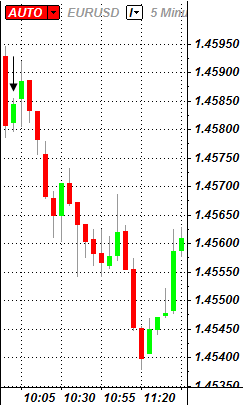Trading the News: U.S. New Home Sales\
What's Expected:
Time of release: 05/24/2011 14:00 GMT, 10:00 EST
Primary Pair Impact:EURUSD
Expected: 300K
Previous: 300K
DailyFX Forecast: 280K to 310K
Why Is This Event Important:
Sales of newly built homes in the U.S. are expected to hold flat in April and the ongoing weakness within the real economy could bear down on the exchange rate as investors weigh the prospects for a sustainable recovery. As the housing market remains depressed, the Federal Reserve may retain its zero interest rate policy throughout 2011, and the near-term rally in the greenback may come under pressure should Chairman Ben Bernanke continue to talk down speculation for a rate hike. However, the FOMC may see scope to lift the benchmark interest off the record-low later this year, and interest rate expectations are likely to play an increased role in driving price action for the USD as the central bank looks to conclude its easing cycle in June.
Recent Economic Developments
The Upside
|
Release |
Expected |
Actual |
|
Consumer Credit (MAR) |
$5.000B |
$6.016B |
|
Pending Home Sales (MoM) (MAR) |
1.5% |
5.1% |
|
Consumer Confidence (APR) |
64.5 |
65.4 |
The Downside
|
Release |
Expected |
Actual |
|
Existing Home Sales (APR) |
5.20M |
5.05M |
|
Advance Retail Sales (APR) |
0.6% |
0.5% |
|
GDP (QoQ) (Annualized) (1Q A) |
2.0% |
1.8% |
The expansion in consumer credit paired with the rebound in household confidence should help to prop up domestic demands, and an unexpected rise in new home sales could instill a bullish outlook for the U.S. dollar as the economic recovery gathers pace. However, as retail spending cools, the slower pace of existing home sales certainly batters the outlook for the housing market, and private sector activity may slow further as households cope with higher energy costs paired with the tepid recovery in the labor market. In turn, Fed Chairman Bernanke may keep borrowing costs close to zero throughout the second-half of the year, and the U.S. dollar may struggle to hold its ground as interest rate expectations deteriorate.
Potential Price Targets For The Release

How To Trade This Event Risk
Expectations for a flat home sales reading certainly reinforces a bearish outlook for the greenback, but an unexpected improvement should spark a bullish reaction in the USD as growth prospects improve. As a result, if demands increase at an annualized pace of 310K or greater in April, we will need a red, five-minute candle following the report in order to establish a sell entry on two-lots of EUR/USD. Once these conditions are met, we will set the initial stop at the nearby swing high or a reasonable distance from the entry, and this risk will generate our first target. The second objective will be based on discretion, and we will move the stop on the second lot to cost once the first trade reaches its mark in order to protect our profits.
On the other hand, Americans may scale back on home purchases given the ongoing weakness within the real economy, and a dismal sales report could bear down on the exchange rate as growth prospects deteriorate. Therefore, if demands holds steady at 300K or weaken from the previous month, we will implement the same strategy for a long euro-dollar trade as the short position laid out above, just in reverse.
Impact that the U.S. New Home Sales report has had on USD during the last month
|
Period |
Data Released |
Estimate |
Actual |
Pips Change (1 Hour post event ) |
Pips Change (End of Day post event) |
|
Mar 2011 |
04/25/2011 14:00 GMT |
280K |
300K |
-23 |
-3 |
March 2011 U.S. New Home Sales
|
Demands for newly built homes in the world's largest economy bounced back from a record-low, with sales increasing 11.1% in March to an annualized 300K. A deeper look at the report showed a median price of $213,800, up from $207,700 in February, while values weakened at an annual pace of 4.9%, which compares with the 6.4% decline seen in the previous month. As employment remains subdued, the ongoing weakness within the private sector will continue to bear down on the housing market, and the Fed may look to support the real economy for most of 2011 as it aims to encourage a sustainable recovery. However, as the FOMC plans to conclude QE2 in June, the central bank may see scope to start normalizing monetary policy towards the end of the year, and Fed Chairman Ben Bernanke may soften his dovish tone for future policy as growth and inflation gather pace. Indeed, currency traders showed a bullish U.S. dollar reaction to the data, with the EUR/USD slipping to a low of 1.4538 during the North American trade, but the market reaction was short-lived as the exchange rate ended the day at 1.4578. |
 |
Questions? Comments? Join us in the DailyFX Forum
Join Currency Analyst David Song in the DailyFX Trading Room to cover the event LIVE!
View the Expo Presentation on ‘Trading the News' For Additional Resources
To discuss this report contact David Song, Currency Analyst: dsong@dailyfx.com
© 2024 Benzinga.com. Benzinga does not provide investment advice. All rights reserved.
Comments
Trade confidently with insights and alerts from analyst ratings, free reports and breaking news that affects the stocks you care about.